
There are so many different types of eggs available today — even different forms in which eggs can be purchased — it can be hard to know what’s best for your family. This glossary will explain everything you need to know about egg composition, varieties, grading and cooking methods.
An air cell is a pocket of air usually located at the large end of an egg. The air cell sits between the shell and the membrane, and it grows as an egg ages.
Albumin is the translucent egg white that surrounds the yolk. This protein-rich liquid remains transparent until it is beaten or exposed to heat, at which point it solidifies and turns white. This solidifying reaction makes egg whites important thickening agents in dishes like custards and quiches.
Biconical eggs are tapered at both ends. This shape is common in grebe eggs and in birds that clutch two to three eggs at a time.
Eggs are colored by three primary pigments — protoporphyrin IX, biliverdin and its zinc chelates. Biliverdin and the zinc chelates of biliverdin are responsible for blue-green egg colors.
Sometimes, you will crack an egg and find a red splotch in the yolk. This redness is called a blood or meat spot, and while it might look off-putting, it is harmless — blood spots don’t impact the nutritional or chemical properties of the egg, and they don’t indicate fertilization. Blood spots are caused by the rupture of a blood vessel during the development of the egg, and most eggs with blood spots are removed before sale.
The bloom is a protective covering or cuticle over the outside of an egg. Bloom protects the egg from dust, bacteria and other harmful microorganisms, and it helps reduce moisture loss as the egg develops. An intact bloom also gives an egg a longer shelf life.
A brood is a group of chicks that have hatched from a clutch of eggs.
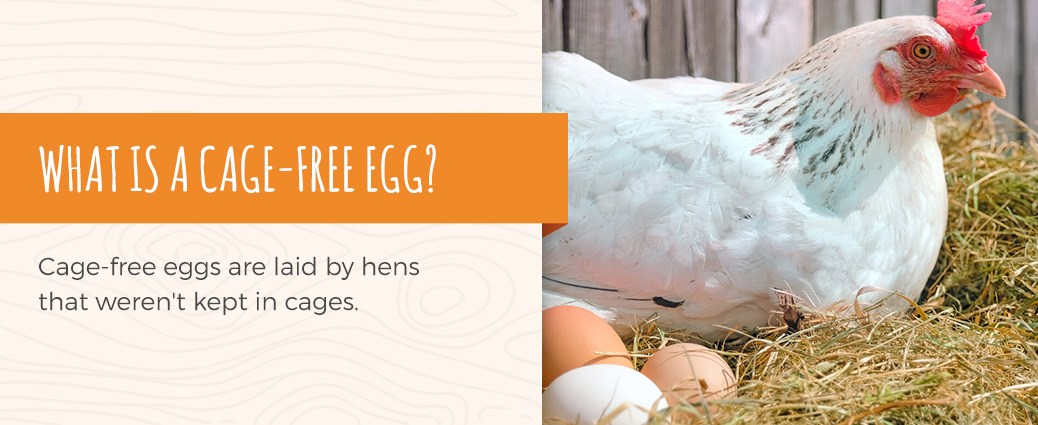
Cage-free eggs are laid by hens that weren’t kept in cages. Typically, cage-free chickens are kept indoors but are allowed to roam freely inside their enclosure, and they have free access to water and food.
Calcification is the process of shell formation, occuring while the egg is still in the shell gland of the chicken.
Most of an eggshell is made up of particles of crystal calcium carbonate. This coating gives eggshells their typical smooth texture with occasional grains and bumps.
Chalazae are the white, rope-like threads inside raw egg whites. Their purpose is to stabilize the egg yolk, keeping it from breaking when the egg moves. Generally, chalazae are more prominent and noticeable in fresh eggs, and they wear down as the egg ages.
The chalaziferous white is the first and central layer of the albumin. Also called the “inner thick,” this layer surrounds the yolk, stabilizing it and keeping it in the middle of the egg. The chalaziferous white is concentrated and almost like a capsule, designed to support the yolk and hold the chalazae.
The egg’s cuticle is the outer membrane that covers the eggshell. The cuticle gives the shell a bloom, helping to protect it from bacteria, dust and other microorganisms.
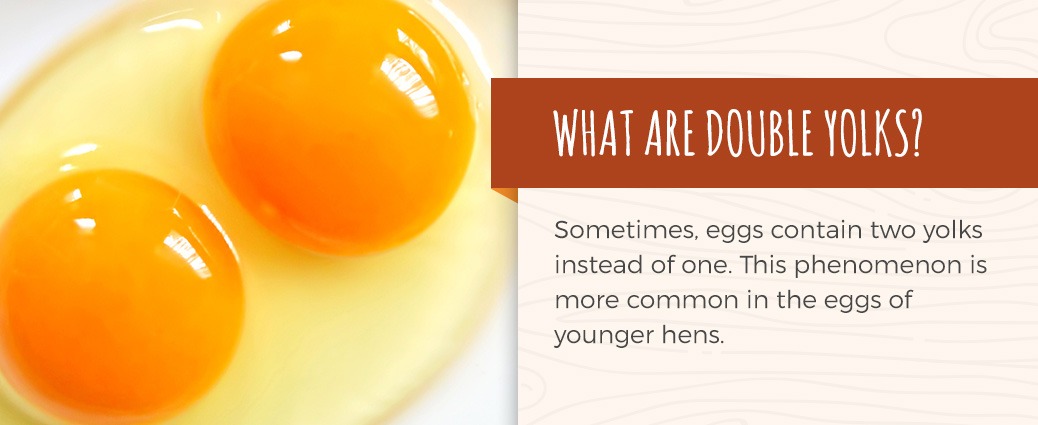
Sometimes, eggs contain two yolks instead of one. This phenomenon is more common in the eggs of younger hens, but some chickens produce double-yolked eggs as long as they are reproductively active.
Free-range chickens aren’t raised indoors or in cages. Instead, they are allowed to roam an outdoor enclosure — free-range hens can forage for insects, plants and other foods in addition to any feed they are given.
A frittata is a classic Italian breakfast dish. Frittatas are made with beaten and fried egg yolks, and they are filled with a variety of toppings such as cheese, meats and vegetables. They resemble a Spanish omelet or a crustless quiche.
Glycoproteins are proteins found in the egg white. Glycoproteins stack on top of each other in microscopic layers, and they often link with carbohydrate molecules to form strong side chains within the egg.
Gold Feed is the name of Sauder’s unique, vegetarian chicken feed. Sauder’s Gold Feed features all-natural ingredients, free from antibiotics or hormones. Gold Feed provides eggs with a wide range of essential nutrients, including vitamin D, vitamin E, omega-3 fatty acids and lutein.
Grading refers to the USDA’s process of classifying foods. Eggs are graded based on their quality and their weight, and they are placed into one of three categories — grade AA, grade A and grade B. All grades of eggs taste the same — the differences in grading are determined by appearance more than any other factor.
Grade AA is the highest grade of commercial eggs. In grade AA eggs, the egg yolks are round and high, and they are nearly free from visible defects. The egg whites are firm and thick, and they have a lot of thick white around the yolk and a small amount of thin white. Grade AA eggs have clean and unbroken shells, and the entire egg content covers a small area once broken.
Grade A is the middle grade of commercial eggs. Grade A eggs have round, high yolks and their egg whites are reasonably firm with a large amount of thick white and a medium amount of thin white. When broken, the egg content covers a moderate area.
Grade B eggs are the final grade of commercial eggs, and they are often used to make dried, frozen and liquid egg products. With grade B eggs, the egg yolk is typically enlarged and flat. The egg white is watery and thin, and it has no thick white and a large amount of thin white. When grade B eggs break, their contents cover a wide area. Grade B eggs are unbroken, but they occasionally have light stains.
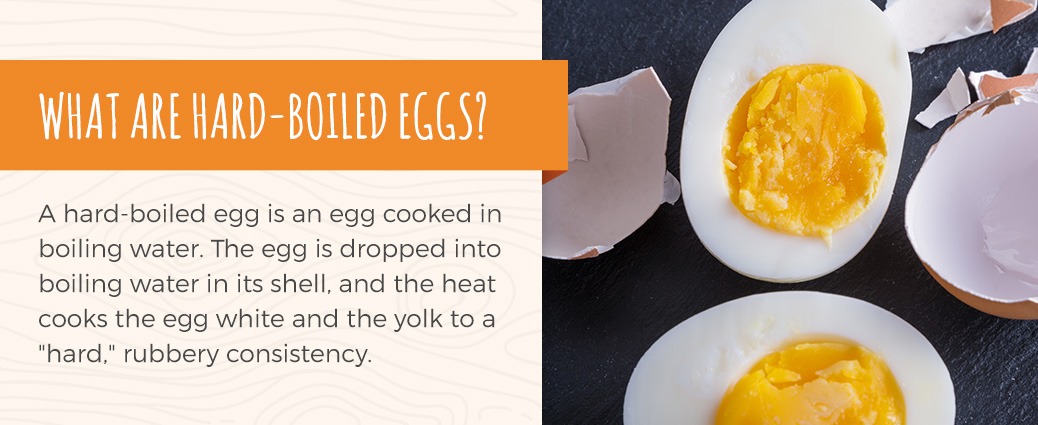
A hard-boiled egg is an egg cooked in boiling water. The egg is dropped into boiling water in its shell, and the heat cooks the egg white and the yolk to a “hard,” rubbery consistency.
Found in eggs, HDL stands for high-density lipoprotein. HDL is often called the “good” type of cholesterol — it absorbs cholesterol, delivering it to the liver so that it can be flushed from the body. According to medical studies, people who have higher levels of HDL are less likely to suffer strokes and heart disease.
In an egg, the inner membrane is the second protein barrier, positioned directly next to the outer membrane. Unlike the outer membrane, the inner membrane surrounds the albumin. As an egg cools after laying, the inner membrane separates from the outer membrane to form the air cell.
The inner thin white is a layer of the albumin. It comes after the chalaziferous white, and it helps to protect the yolk and keep it in the center of the egg. The inner thin white is larger and more pronounced than the inner thick white, containing more liquid and proteins.
A mottled egg is an egg with blotches or white spots over its yolk.
Omega-3 fatty acids are essential dietary compounds. However, the human body produces very few omega-3 acids, which means that we must get them from our food. Omega-3 enriched eggs contain a high amount of omega-3 fatty acids. This is achieved by adding ingredients high in omega-3 acids to a chicken’s diet, such as fish oils, algae and flaxseed.
An omelet is a classic breakfast dish made from beaten eggs, cheese and a variety of toppings. Omelets are cooked in a frying pan until the eggs are firm, and they are typically served folded in half.
Organic eggs are produced by chickens raised in environments that comply with USDA organic certifications. To secure the USDA certified seal, organic eggs and their production methods must abide by USDA organic standards, which means that the hens weren’t given feed with herbicides, pesticides or other harmful chemicals.
The outer membrane of an egg is the translucent gel in contact with the eggshell. Once a hen lays an egg, the egg quickly begins to cool. During this cooling process, the inner and outer membranes separate, forming individual layers.
The outer thick white provides the albumin with additional texture and fluid.
The outer thin white the final layer of the albumin, farthest from the yolk. The fluid in the thin layer contains protein-based nutrients and other compounds that would help an embryo develop if the egg was fertilized.
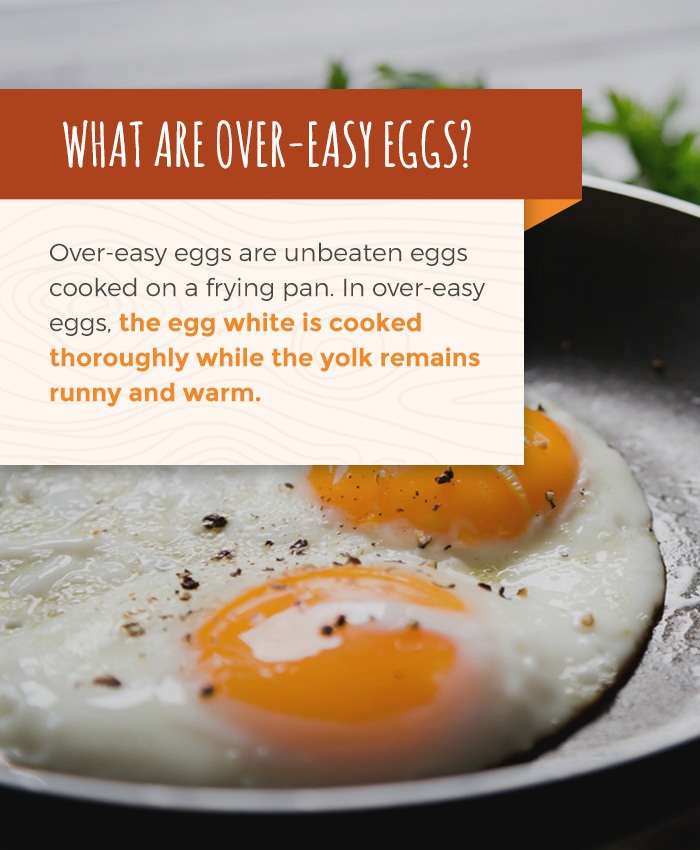
Over-easy eggs are unbeaten eggs cooked on a frying pan. In over-easy eggs, the egg white is cooked thoroughly while the yolk remains runny and warm. Although the terms over-easy and sunny-side up are used interchangeably, they don’t describe the same dish — an over-easy egg is cooked on both sides, while a sunny-side up egg is only cooked on one side.
Over-hard eggs follow the same cooking method of over-easy eggs, but over-hard eggs are fried on a pan until both the egg white and the yolk are completely cooked. The yolk usually breaks while cooking, allowing it to solidify like the rest of the egg.
Over-medium eggs are between over-easy and over-hard eggs. To make over-medium eggs, you fry one side, flip the egg over and then fry the other for a little longer than you would cook an over-easy egg. The egg white should be thoroughly cooked and a little brown at the edges, and although the yolk has a thicker film, it is still runny on the inside.
Pasteurization is the process of heating a food to destroy pathogens. The practice is named after the scientist who pioneered it, Louis Pasteur. Most people associate pasteurization with milk, but the process applies to eggs as well — pasteurized eggs have been heated in-shell to kill bacteria such as salmonella. Pasteurization allows you to use raw eggs in safely in recipes, without risking contamination.
Pasture-raised hens produce pasture-raised eggs. This certification means that chickens were raised in a pasture environment instead of an indoor enclosure or henhouse.
PCO stands for the Pennsylvania Certified Organic organization. The PCO provides education, certification and inspection services for its members. All organic egg farms must abide by their requirements and standards to maintain their certification.
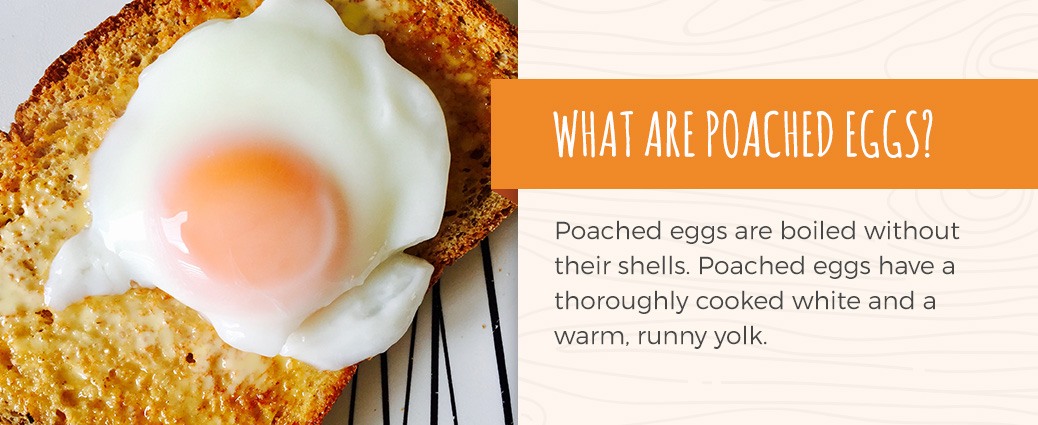
Poached eggs are boiled without their shells. They have the consistency of over-medium eggs, but instead of being fried on a pan, they are boiled in water — the water thoroughly cooks the egg without leaving any hard or crispy edges. Poached eggs have a thoroughly cooked white and a warm, runny yolk.
Quiche is a baked tart or flan made from eggs, cream and cheese. Usually, it is cooked in a pastry dough pie shell, and it often includes meat and vegetables. Originating in France, quiche is traditionally served in the morning, although it can be enjoyed for any meal in the day.
Between 7,000 and 17,000 semipermeable pores cover eggshells, letting air and moisture to pass through to the developing egg. Semipermeable pores are part of the semipermeable membrane, which also handles gas exchange on the surface of the egg — the membrane allows carbon dioxide to exit the egg, and it absorbs beneficial atmospheric gases such as oxygen.
Shell calcification is the process of shell formation while an egg is still in the shell gland of a hen. The calcification process takes approximately 15 to 16 hours.
Soft-boiled eggs are cooked in-shell in boiling water, just like hard-boiled eggs. However, for a soft-boiled egg, the typical cooking time for a hard-boiled egg is cut in half — this allows the egg white to cook thoroughly but leaves the yolk runny.
Sunny-side up eggs are cooked similarly to over-easy eggs, except they aren’t flipped halfway through the frying process. This keeps the yolk from developing a film.
USDA stands for the United States Department of Agriculture. The USDA oversees food quality across the United States.
The vitelline membrane is a thin and transparent membrane that surrounds the yolk, helping to keep it contained.
Sometimes an egg yolk is colorless or white, instead of the usual yellow or orange color. These white yolks are more common in hens fed a diet that contains high amounts of processed barley or white cornmeal.
The yolk is the yellow-orange center of an egg. Typically, yolks take up one-third of the total volume of the egg. The yolk contains vital fats and proteins, and it is a source of many different vitamins and minerals.
Zinc chelate is a part of the biliverdin. Both compounds are pigments responsible for egg coloration — zinc chelate produces blue-green colors.
Sauder Eggs is a third-generation family-owned business with a reputation for quality and fair prices. We work with nearly 100 farms that have more than 6.5 million egg-laying hens. Learn more about our eggs on our blog.